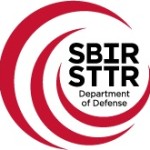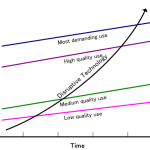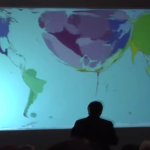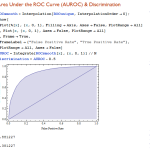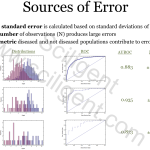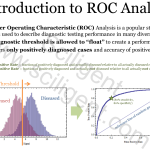Science Daily, December 13, 2017 To gain better control over the flow of water on superhydrophobic materials, scientists have been etching paths into coatings for the liquid to follow. And although water will take the designated path, it can leave behind a wet trail as the rolling droplets have a different contact angle at the front and back. An international team of researchers (China, US – UMass Amherst) has developed a technique to make the tracks hydrophobic which is critical for keeping water droplets’ spherical shape and minimizing the difference in the front and back contact angles. Testing showed that […]
What does “Sciligent” mean?
Rather than write about it, I made the video below to describe where it comes from.Now, as to the pronunciation, the first “i” is long. as in SAI – ligent, because the “sci” comes from “science” which also has a long “i”
DoD/SBIR 14.2 Topics Announced
The latest batch of SBIR’s were announced last week. You can view them all at the official site and also sign up there for e-mail announcements. SITIS Topic # Program Solc Agency Title A14-081 SBIR 14.2 Army Innovative Situational Awareness and Decision Making Algorithms on Open Architecture System-on-Module Q&A A14-082 SBIR 14.2 Army Projectile Energy Devices A14-083 SBIR 14.2 Army Scalable Design Method for Reconfigurable Canard Actuation Systems A14-084 SBIR 14.2 Army Hybrid Projectile Components Miniaturization A14-085 SBIR 14.2 Army Hemispheric Imaging System A14-086 SBIR 14.2 Army Room Temperature Ballistic Testing Backing Material A14-087 […]
Disruptive Innovation Explained by Clayton Christensen
When talking to clients and colleagues the term “disruptive innovation” will often be used. In fact, this is popular enough that it appears in government solicitations. Since the term was originated by Clayton Christensen several years ago, it has taken on a variety of different meanings. It is certainly overused, but I often wonder if it is being misused. It is important to recognize that the term comes directly from Christensen’s Disruptive Innovation Theory. And although it has since strayed from this specific definition, it is important to keep its past in mind.Here is the original definition from Christensen:”A disruptive […]
The Three Technology Drivers (according to Neil Tyson)
Astrophysicist Neil deGrasse Tyson, outlines the only technology drivers that have been behind big investment projects from the construction of the pyramids to the exploration of the new world to the Manhattan Project. Making extraordinary investments in science and technology requires convincing the “checkwriters” (as he describes them) to invest not for reasons like intellectual curiosity or adventure but for very different reasons. In his survey, despite expecting to find hundreds of reasons, he only found three: The War/Defense/Fear Driver Economic/Promise of Wealth/Greed Driver Tribute to Deity/Royalty/Adoration Check out the following video where he speaks at length about these: His […]
Receiver Operating Characteristics (ROC) Analysis (Part 3 of 3)
This is the third part of a three-segment series on ROC Analysis Code Development This particular client had a significant amount of data and was interested in varying the types of analyses that could be extracted from that data set. As such, we knew that to complete this project efficiently and effectively, it would be our advantage to develop the analysis not as a spreadsheet (which is typical) but as a Mathematica program, which although is more time-consuming on the front end, pays some serious dividends in time-saving as it is repeatedly used. Additionally, especially for this engagement, we knew […]
Receiver Operating Characteristics (ROC) Analysis (Part 2 of 3)
This is the second part of a three-part segment on how we use ROC analysis to help clients benchmark their diagnostic or predictive methods they may be developing. The following are introductory slides we provide as part of every client briefing to explain to them our analytical approach, and to quickly get them up to speed on the essential metrics we will be addressing. In this case, it was necessary for us to provide a simple tutorial on ROC analysis. Slide 1: Slide 2: Slide 3 … and that covers the basic tutorial introduction that we provide for this type […]
Technology Valley of Death
The technology valley of death refers to the gap between two phases (typically basic and applied research) in the evolution of a technology where the risk is greatest that the technology will fail due to several factors, chief among them is finding a supporting body in the next phase to carry the technology. This technology transition represents the riskiest part in what is typically incremental advancements in the technology life cycle. Technology evolution is driven by technology push and application (or market) pull, though the two drivers are not so easily separated because they can be closely interlinked. This is […]
Receiver Operating Characteristics (ROC) Analysis (Part 1 of 3)
This is the first part of a three-part series of posts that will walk through a typical data analysis engagement we perform for clients. This part will address aspects of the service and setup. The second part will address the problem faced by the client (in this example, diagnostic pathology). The 3rd part will summarize our conclusion and interpretation and how that data analysis (in this example, ROC analysis) impacts the problem. Motivation Part of the services we offer is advanced data analysis. Many types of statistical data analyses are agnostic to the field of study, and require only […]
